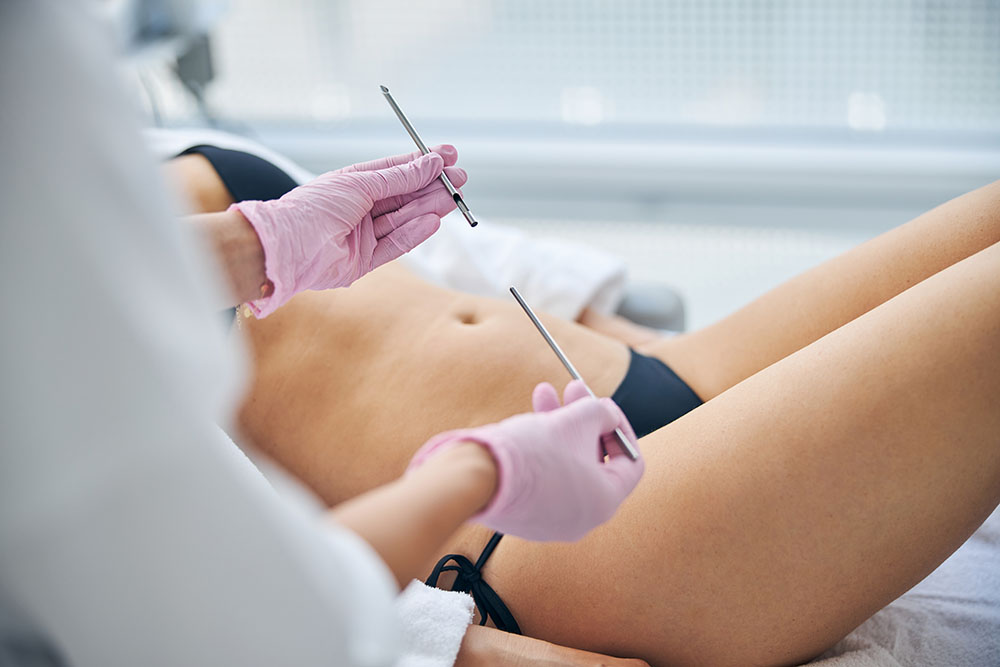
About Our Skin Punch Biopsy Services
Metropolis Dermatology also performs a procedure known as a skin punch biopsy, which involves extracting a small circular piece of skin using a specialized tool, offering a comprehensive tissue sample for accurate diagnosis and treatment. This method is particularly valuable in assessing various skin conditions, such as suspected skin cancer, inflammatory disorders, or autoimmune diseases, by analyzing cellular structure, inflammation, and anomalies within the skin layers.
The biopsy’s advantage lies in its ability to capture a full-thickness skin section, including the epidermis, dermis, and sometimes subcutaneous fat, enabling precise diagnosis. During the procedure, a local anesthetic is applied, and a circular blade extracts a small sample, which is then analyzed under a microscope by dermatopathologists. Although resulting in a minor wound, the biopsy findings guide personalized treatment plans, emphasizing proper healing and follow-up care for optimal outcomes.
Understanding Moles
If you are unclear on the mole definition, find out more about it here. A mole, also known as nevus, is a cluster of pigmented cells that appear as dark spots on the skin. They develop due to the accumulation of melanocytes, the pigment-producing cells.
While most skin moles are harmless, understanding their formation is essential. Explore topics such as the definition of moles, their development, and their connection to melanin production.
Types of Moles
Delve into the various types of moles here:
- Congenital moles - Present at birth, larger in size, potential for increased melanoma risk.
- Dysplastic nevi - Irregular shapes, varying colors, higher melanoma risk.
- Common moles - Everyday pigmented spots, usually harmless. Vary in color and size, often round or oval.
Signs of Atypical Moles
Identifying atypical or suspicious moles involves paying attention to specific characteristics. Watch for asymmetry, irregular borders, variations in color, and any changes in diameter or evolution in appearance.
If a mole exhibits these irregularities during self-examination, it's crucial to seek professional evaluation promptly. Monitoring mole irregularities helps in the early detection of potential skin issues, ensuring timely intervention and peace of mind.
ABCDEs of Melanoma Detection
Learn the rules of ABCDE for melanoma skin cancer detection, such as the following:
- Assess moles for Asymmetry, ensuring both halves match
- Inspect irregular Borders
- Note Color variations
- Monitor Diameter, with a threshold of 6mm
- Be vigilant for any Evolving changes in size, shape, or color.
Understanding and applying these criteria during mole examination enhances early skin cancer detection and intervention.
Mole Self-Examination Guide
Conduct a thorough self mole examination with these steps. Use a mirror to check moles on all body parts in a well-lit area. Look for asymmetry, irregular borders, color changes, and any variations in size. Enlist a partner for hard-to-reach areas. Perform this skin check at home monthly to detect any abnormalities early, ensuring proactive skin health.
When to See a Dermatologist
Book a dermatologist mole check if you notice sudden changes, itching, bleeding, or any concerns about the ABCDE criteria. Timely dermatologist consultations ensure accurate assessments and proactive interventions, promoting peace of mind regarding your skin health. Don't hesitate; prioritize your well-being with professional mole consultation.
Hear from
Real Patients

Schedule Your Consultation Today
Take control of your skin health. If you have concerns about moles or notice changes, don't hesitate to book a consultation for a mole check. We have customers coming in from Brentwood, Downtown L.A., Pasadena, Costa Mesa & Orange County. Schedule an appointment with Metropolis Dermatology today!
